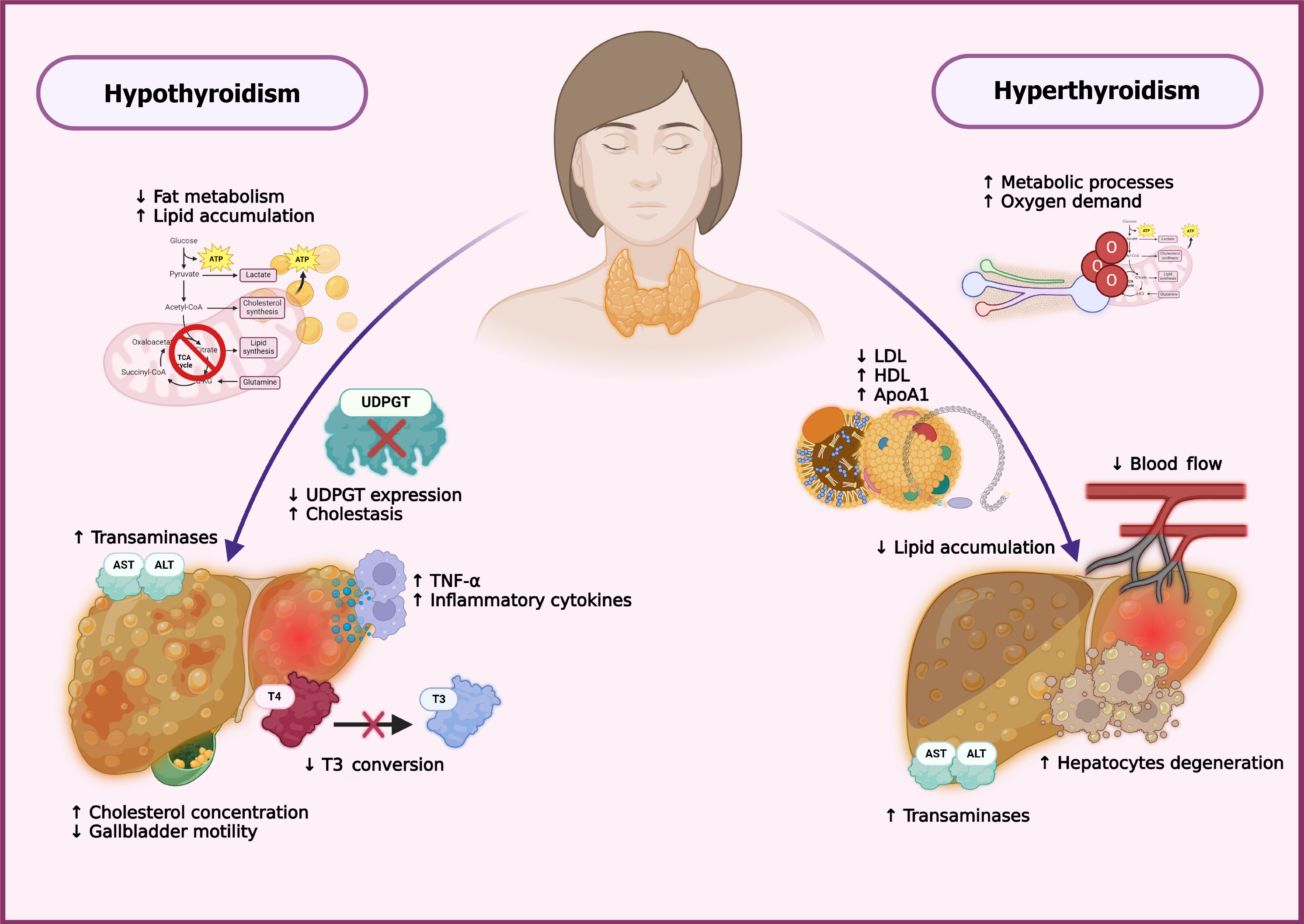Copyright
©The Author(s) 2025.
World J Gastroenterol. Aug 28, 2025; 31(32): 108827
Published online Aug 28, 2025. doi: 10.3748/wjg.v31.i32.108827
Published online Aug 28, 2025. doi: 10.3748/wjg.v31.i32.108827
Figure 2 The role of the thyroid gland.
In hypothyroidism, reduced levels of thyroxine (T4) and triiodothyronine (T3) lower the basal metabolic rate and impair lipid metabolism, leading to hepatic lipid accumulation due to decreased β-oxidation and suppressed lipolytic gene expression. It also reduces uridine diphosphate-glucuronosyltransferase activity, impairing bilirubin conjugation and promoting cholestasis. Diminished D1 activity limits T4-to-T3 conversion, and elevated proinflammatory cytokines like tumor necrosis factor-α contribute to hepatocellular injury and increased transaminase levels. Hypothyroidism also impairs low-density lipoprotein (LDL) clearance and bile acid synthesis, raising serum cholesterol and reducing gallbladder motility. Conversely, hyperthyroidism accelerates lipid metabolism and stimulates lipoprotein lipase activity, which decreases LDL levels. Despite this, high-density lipoprotein concentrations tend to rise, possibly due to enhanced synthesis of apolipoprotein A1. However, increased oxidative stress and hepatic oxygen demand can lead to hepatocyte damage, particularly in centrilobular zones. These contrasting effects emphasize the bidirectional relationship between thyroid status and liver health. ATP: Adenosine triphosphate; TCA: Tricarboxylic acid cycle; T3: Triiodothyronine; UDPGT: Uridine diphosphate-glucuronosyltransferase; T4: Thyroxine; TNF: Tumor necrosis factor; ALT: Alanine aminotransferase; AST: Aspartate aminotransferase; ApoA1: Apolipoprotein A1; HDL: High-density lipoprotein; LDL: Low-density lipoprotein.
- Citation: Vargas-Beltran AM, Armendariz-Pineda SM, Martínez-Sánchez FD, Martinez-Perez C, Torre A, Cordova-Gallardo J. Interplay between endocrine disorders and liver dysfunction: Mechanisms of damage and therapeutic approaches. World J Gastroenterol 2025; 31(32): 108827
- URL: https://www.wjgnet.com/1007-9327/full/v31/i32/108827.htm
- DOI: https://dx.doi.org/10.3748/wjg.v31.i32.108827









